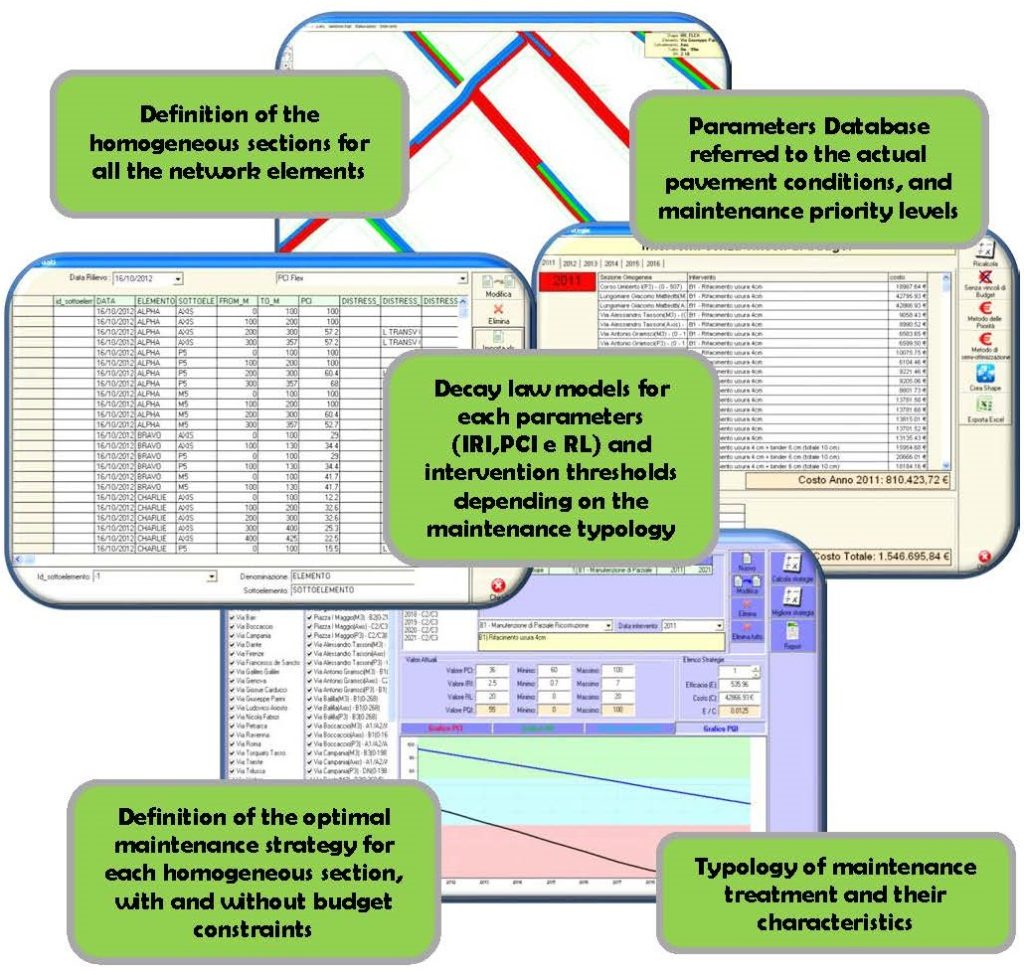RO.MA. PMS
SOFTWARE FOR PLANNED MAINTENANCE OF ROADS AND AIRPORTS PAVEMENTS
The purpose of a PMS is to improve the quality of airport infrastructures and maintenance measures plannig in the short, medium and long term, maximizing available resources, that are not always adequate to the needs. RO.MA. PMS responds to the need for an asset management tool and a PMS airport planning of interventions on airport pavements. The survey of functional and structural characteristics of the pavements, done by the use of high-performance systems, is the basis of PMS. The most important parameters measured in the infrastructure and used by RO.MA. PMS are the bearing capacity (measured with HWD) for ACN-PCN evaluation, roughness and planimetric profiles, surface distress and PCI-Pavement Condition Index, skid resistance. RODECO Group has recently developed and introduced new technologies for automatic measurement of the PCI, IRI and distress, in particular the system ADE (Automated Distress Evaluation), the PL1 (Laser Profilometer low-cost for the pavement quality control) which allow more extensive and widespread use of high-performance systems for surveying and quality control of road and airport infrastructures. The RO.MA. PMS has been continuously updated in relation to the evolution of high-performance systems, the new needs expressed by users and in particular the international experience gained by RODECO in the field of Pavement Evaluation and Management System. Particular attention was dedicated in software development, simplification and flexibility of data entry procedures, in order to reduce the amount of information necessary to obtain the results of the PMS. The main requirements of RO.MA. PMS are as follows:
- provide a methodology to assess the pavement conditions (surface and structural parameters) using the definition of the Pavement Quality Index (PQI);
- provide a device to define an optimum plan of maintenance (scheduled maintenance) of a road or an airport with a priority list of interventions;
- estimate the optimal time to proceed to maintenance using appropriate models and predict paving future conditions and structural surface;
- propose planned maintenance based on optimizing the cost / benefit ratio, with any budget constraints introduced by the user.
Software is able to provide optimal maintenance intervention strategies in a preset period of time, with the option of setting budget constraints, starting from the creation of a database resulting from high-performance non-destructive surveys (Bearing Capacity, Roughness, PCI, Grip) and the calculation of homogeneous sections.

